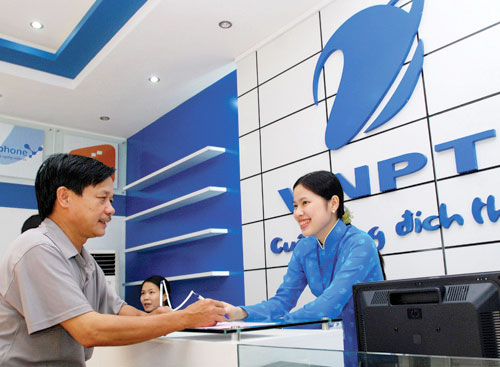VNPT plans expanding to equipment production

At the group’s recent 2016 plan deployment meeting, Minister of Information and Communications Nguyen Bac Son opted to name manufacturing as the base for VNPT’s sustainable development and its key to increase competitiveness.
“VNPT should prepare to establish a manufacturing arm in 2016,” said the minister.
According to Tran Manh Hung, chairman of VNPT’s board of members, the group’s strategy is to switch from providing purely telecommunication services to services that integrate telecommunication with information technology to better serve individual customers, companies, and governmental clients. Manufacturing equipment is not only going to help VNPT meet the needs of Vietnamese customers, but will also enable it to compete internationally.
The focus on equipment manufacturing stems from a recognised demand of customers. According to VNPT general director Pham Duc Long, most of the IT and terminal equipment of Vietnamese mobile service providers are imported. Meanwhile, information security is getting tougher to reliably guarantee, and terminal equipment is where customers’ information is physically stored.
Long said that in 2016 VNPT would concentrate efforts on producing peripheral equipment, besides electronics, telecom, and IT equipment. The products will not only be sold domestically but will also be exported.
As of now, VNPT production coversall of its broadband terminal equipment. Furthermore, “VNPT used to import all of its fiber optic cables from China, but nowall these are produced by VNPT. The quality is higher and the price is lower,” Long said.
Apart from producing equipment, VNPT is also planning to provide more value-added services in healthcare and education as well as serve social needs. The company is in the process of expanding its health information system (VNPT-HIS), which integrates all patient information from different hospitals into a single database. The system will also enable patients to retrieve appointment schedules and prescriptions and provide information to regulating government agencies. As of the end of 2015 the solution was used by about 400 health facilities across six provinces of the country.
In a recent interview with local media, general director Pham Duc Long noted that producing equipment and providing value-added services would make up two of the four pillars of VNPT development strategy in the years to come, besides building the national telecom infrastructure and providing mobile and data services.
VNPT saw the loss of a sizable chunk of revenue after parting with MobiFone, the second most popular mobile operator in Vietnam, in 2014.
What the stars mean:
★ Poor ★ ★ Promising ★★★ Good ★★★★ Very good ★★★★★ Exceptional
Latest News
More News
- Vietnam’s industrial output hits seven-year high in 2025 (January 06, 2026 | 17:47)
- GELEX’s credit rating outlook upgraded to 'Positive' by VIS Rating (January 06, 2026 | 16:49)
- Finance sector lays firm groundwork for 2026 after major reform (January 06, 2026 | 15:30)
- Vietnam’s seafood exports surpass $11 billion in 2025 (January 06, 2026 | 08:51)
- Vietnam GDP posts second-strongest growth since 2011 (January 06, 2026 | 08:35)
- Double-digit GDP growth within reach with shift to higher-value expansion (January 06, 2026 | 08:33)
- Takeda Vietnam awarded for ongoing support of Vietnam’s sustainability efforts (December 31, 2025 | 21:00)
- Vietnam's retail market tops $269 billion in 2025 amid e-commerce boom (December 31, 2025 | 19:00)
- Stronger legal framework urged as trade fraud surges online (December 31, 2025 | 18:58)
- FPT exports first chip shipment to Japan (December 31, 2025 | 10:47)














 Mobile Version
Mobile Version